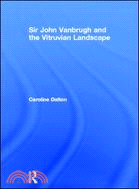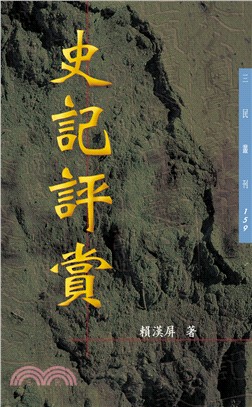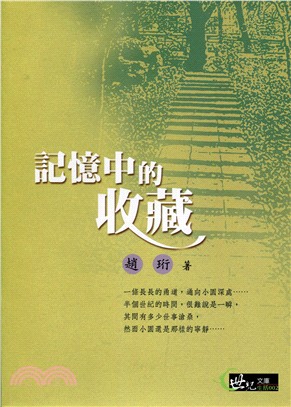Sir John Vanbrugh and the Vitruvian Landscape
商品資訊
ISBN13:9780415611640
出版社:Routledge UK
作者:Caroline Dalton
出版日:2012/01/10
裝訂/頁數:平裝/244頁
規格:24.1cm*17.1cm*1.3cm (高/寬/厚)
版次:1
商品簡介
作者簡介
目次
相關商品
商品簡介
Sir John Vanbrugh (1664-1726) was one of the most important figures in English garden history although he is rarely recognised as such. An eclectic early career as a merchant, a soldier and a dramatist preceded Vanbrugh’s acceptance of the role of architect to the Third Earl of Carlisle in 1699. His impact on architecture was paralleled by a revolution in landscape design as Vanbrugh shifted the place of the architect from the house to the grounds. He used the ancient rules of proportion combined with an empathetic approach to Nature to create innovative layouts that were geometric, but bore no relation to the formal gardens of the seventeenth century.
In Sir John Vanbrugh and the Vitruvian Landscape Caroline Dalton seeks to explain Vanbrugh’s distinctive style of landscape architecture. The natural and moral philosophy of Marcus Vitruvius Pollio (Vitruvius), Euclid, Plato and Epicurus is traced through the Arabic scientists of the Middle Ages into the Italian Renaissance. The book examines the impact of science and humanism on the landscape ethos of Leon Battista Alberti in the Quattrocento and of Andrea Palladio a century later, and looks for parallels with the early Enlightenment in England from 1660 onwards. It becomes clear that the scientific advances and the political, social and economic changes associated with the Enlightenment created an atmosphere where Vanbrugh could thrive. By reference to the writing of Vitruvius, Alberti and Palladio and by utilizing his innate skills as an artist, Vanbrugh combined the science of Vitruvian geometry with the philosophy of the Ancients to create a new English landscape.
The text is illustrated throughout with a hundred images, including eighteenth-century maps and plans which have not previously been published, alongside geometrical analysis and computer-generated reconstructions of Vanbrugh’s landscapes. The author has combined her extensive knowledge of information technology with her experience as a landscape historian, to produce an innovative work which questions our previous understanding of the first English landscape architect. The book is essential reading for students studying the history of the eighteenth-century landscape, as well as appealing to those with a general interest in garden history.
In Sir John Vanbrugh and the Vitruvian Landscape Caroline Dalton seeks to explain Vanbrugh’s distinctive style of landscape architecture. The natural and moral philosophy of Marcus Vitruvius Pollio (Vitruvius), Euclid, Plato and Epicurus is traced through the Arabic scientists of the Middle Ages into the Italian Renaissance. The book examines the impact of science and humanism on the landscape ethos of Leon Battista Alberti in the Quattrocento and of Andrea Palladio a century later, and looks for parallels with the early Enlightenment in England from 1660 onwards. It becomes clear that the scientific advances and the political, social and economic changes associated with the Enlightenment created an atmosphere where Vanbrugh could thrive. By reference to the writing of Vitruvius, Alberti and Palladio and by utilizing his innate skills as an artist, Vanbrugh combined the science of Vitruvian geometry with the philosophy of the Ancients to create a new English landscape.
The text is illustrated throughout with a hundred images, including eighteenth-century maps and plans which have not previously been published, alongside geometrical analysis and computer-generated reconstructions of Vanbrugh’s landscapes. The author has combined her extensive knowledge of information technology with her experience as a landscape historian, to produce an innovative work which questions our previous understanding of the first English landscape architect. The book is essential reading for students studying the history of the eighteenth-century landscape, as well as appealing to those with a general interest in garden history.
作者簡介
Caroline Dalton was educated at the universities of Oxford and Bristol and is currently an Honorary Research Fellow in the School of Geographical Sciences at Bristol. She worked for several years as a programmer and project manager in the computer industry before returning to academia to study the history of designed landscapes. During research for her doctorate on Sir John Vanbrugh she used her experience in IT to establish new and valuable insights into the development of historic gardens and parks, and she has since applied computer technology to many aspects of her work. She is a Tutor of Landscape History on the Continuing Education programme at Oxford and a Fellow of the Royal Geographical Society.
目次
1. ‘On ye shoulders of giants’: Philosophy, Science and Landscape from the Ancients to the Moderns 2. The Early Enlightenment in England 3. John Vanbrugh (1664-1726): A Short Biography 4. Influences on Vanbrugh’s Landscape Style 5. Castle Howard, Yorkshire 6. Blenheim, Oxfordshire 7. Kimbolton, Heythrop and Grimsthorpe 8. Claremont, Surrey 9. Kings Weston, Avon 10. Duncombe Park and Sacombe Park 11. Eastbury, Dorset 12. Stowe, Buckinghamshire 13. Seaton Delaval, Northumberland 14. Greenwich and Lumley Castle 15. Vanbrugh’s legacy: Charles Bridgeman and the Vitruvian landscape 16. Conclusion: ‘an architect who composed like a painter’
主題書展
更多
主題書展
更多書展今日66折
您曾經瀏覽過的商品
購物須知
外文書商品之書封,為出版社提供之樣本。實際出貨商品,以出版社所提供之現有版本為主。部份書籍,因出版社供應狀況特殊,匯率將依實際狀況做調整。
無庫存之商品,在您完成訂單程序之後,將以空運的方式為你下單調貨。為了縮短等待的時間,建議您將外文書與其他商品分開下單,以獲得最快的取貨速度,平均調貨時間為1~2個月。
為了保護您的權益,「三民網路書店」提供會員七日商品鑑賞期(收到商品為起始日)。
若要辦理退貨,請在商品鑑賞期內寄回,且商品必須是全新狀態與完整包裝(商品、附件、發票、隨貨贈品等)否則恕不接受退貨。
























